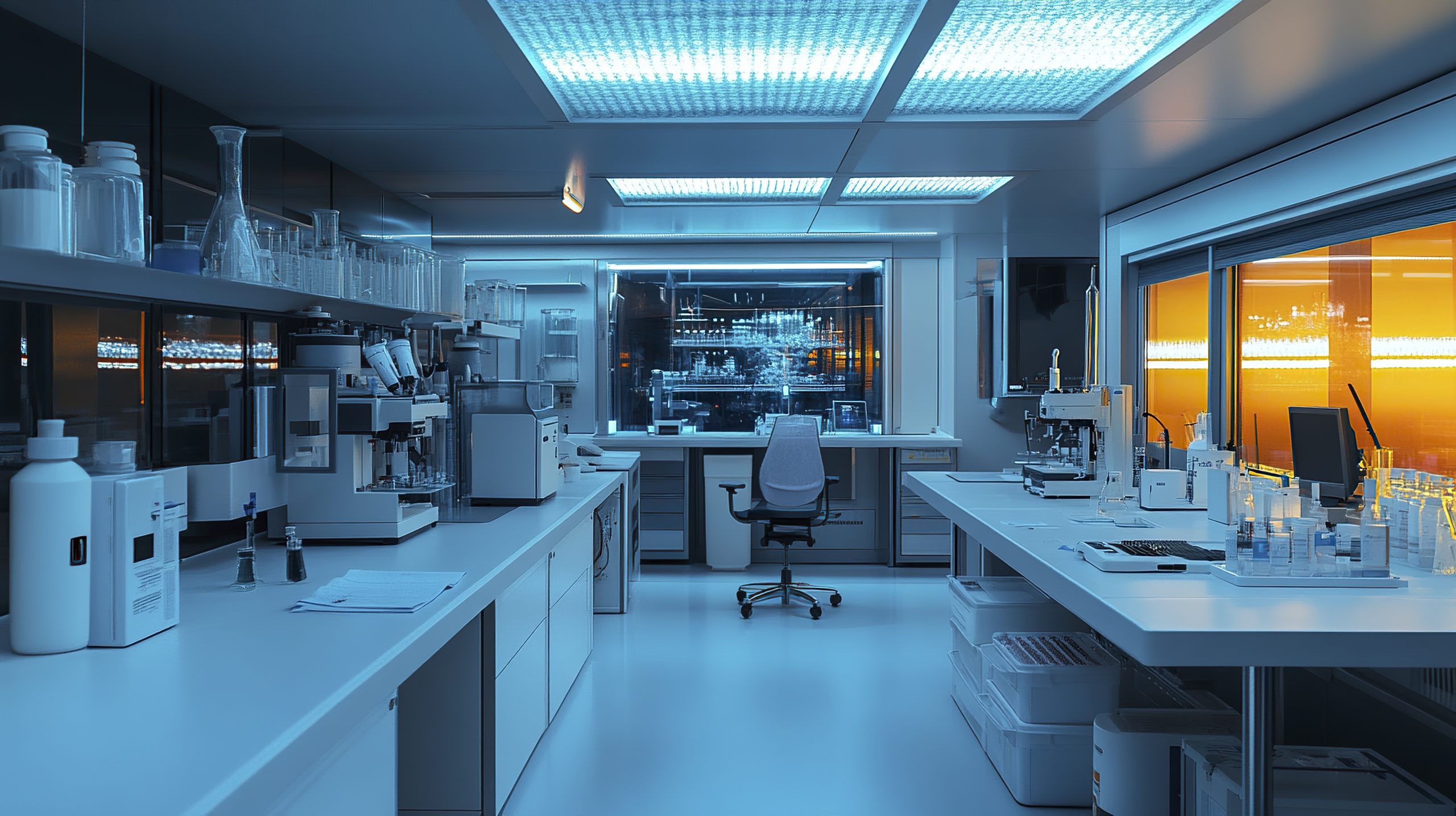Designing interiors for pharmaceutical laboratories is a specialized process that goes far beyond aesthetics. These spaces demand functionality, safety, and strict compliance with international standards. A well-designed pharma lab ensures not only operational efficiency but also safeguards researchers and maintains the integrity of the experiments conducted within.
1. Importance of Smart Pharma Lab Design
Pharmaceutical labs are the heart of research and innovation. Every element — from layout to lighting — must be meticulously planned to support accuracy, hygiene, and safety. A well-thought-out lab interior design enhances workflow, reduces contamination risk, and ensures that all regulatory requirements are met seamlessly.
2. Key Design Principles for Pharma Labs
To create a safe and compliant environment, pharma lab interiors must adhere to several key design principles:
a. Zoning and Workflow Efficiency
The lab layout should promote logical flow — from sample receipt to analysis to waste disposal. Clear zoning minimizes cross-contamination and improves productivity. Separate areas for storage, testing, and documentation also streamline daily operations.
b. Material Selection
Materials used in pharma labs must be non-reactive, easy to clean, and resistant to chemicals. Common choices include:
- Epoxy-coated furniture
- Stainless steel benches
- Antimicrobial wall panels
- Seamless vinyl or epoxy flooring
These materials ensure hygiene while meeting GMP (Good Manufacturing Practice) standards.
c. Ventilation and Air Filtration
Air quality is crucial in any pharmaceutical research environment. Proper HVAC design with HEPA filtration maintains temperature, humidity, and pressure differentials as per cleanroom classifications (ISO, WHO, or GMP standards).
d. Lighting and Ergonomics
Balanced lighting, ideally a combination of natural and LED illumination, supports precision work and reduces eye strain. Ergonomic furniture ensures comfort and minimizes fatigue during long research hours.
e. Safety and Compliance
Safety is at the core of pharma lab design. This includes:
- Clearly marked emergency exits
- Fire-resistant materials
- Fume hoods and biosafety cabinets
- Eye wash and emergency showers
Designs must comply with international safety codes such as OSHA, ISO, and WHO-GMP guidelines.
3. Integration of Technology
Modern pharma labs integrate smart technology for monitoring and automation. IoT-enabled systems can control temperature, humidity, and lighting remotely. Digital record-keeping and lab management systems improve accuracy and traceability.
4. Sustainable Design Approach
Sustainability is becoming an essential consideration in laboratory design. Using energy-efficient HVAC systems, low-VOC materials, and natural light integration reduces environmental impact and operational costs.
5. The Role of Professional Lab Designers
Partnering with a specialized pharma lab interior designer ensures that every aspect of the design meets regulatory and functional needs. Experienced designers understand workflow patterns, safety codes, and equipment requirements — creating a space that supports both research excellence and compliance.
Conclusion
A pharmaceutical lab is more than just a workspace — it’s a controlled environment where science meets safety. Thoughtful interior design enhances productivity, ensures compliance, and protects both people and processes. Investing in professional pharma lab interior design is a strategic step toward innovation, reliability, and long-term operational success.
